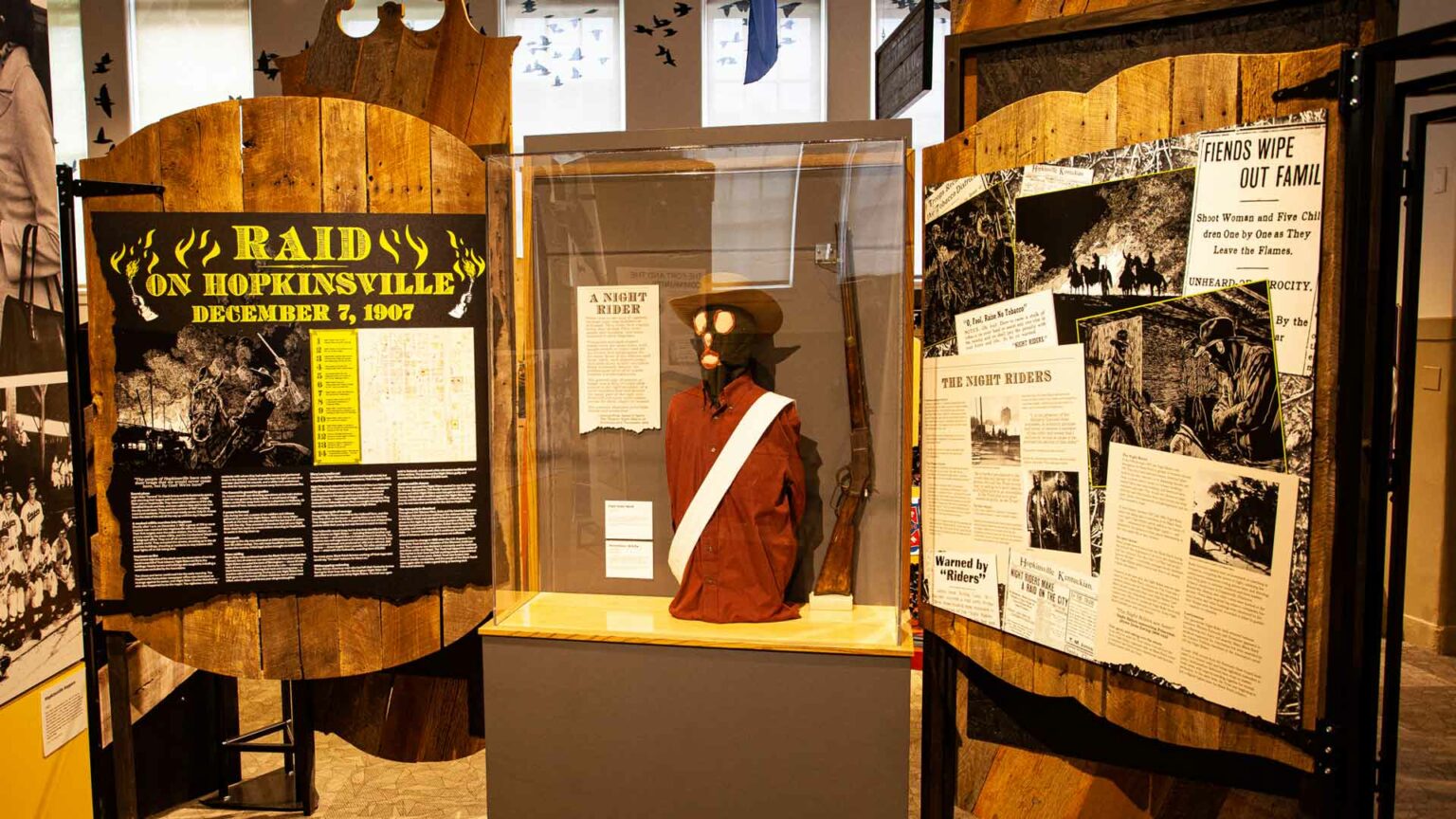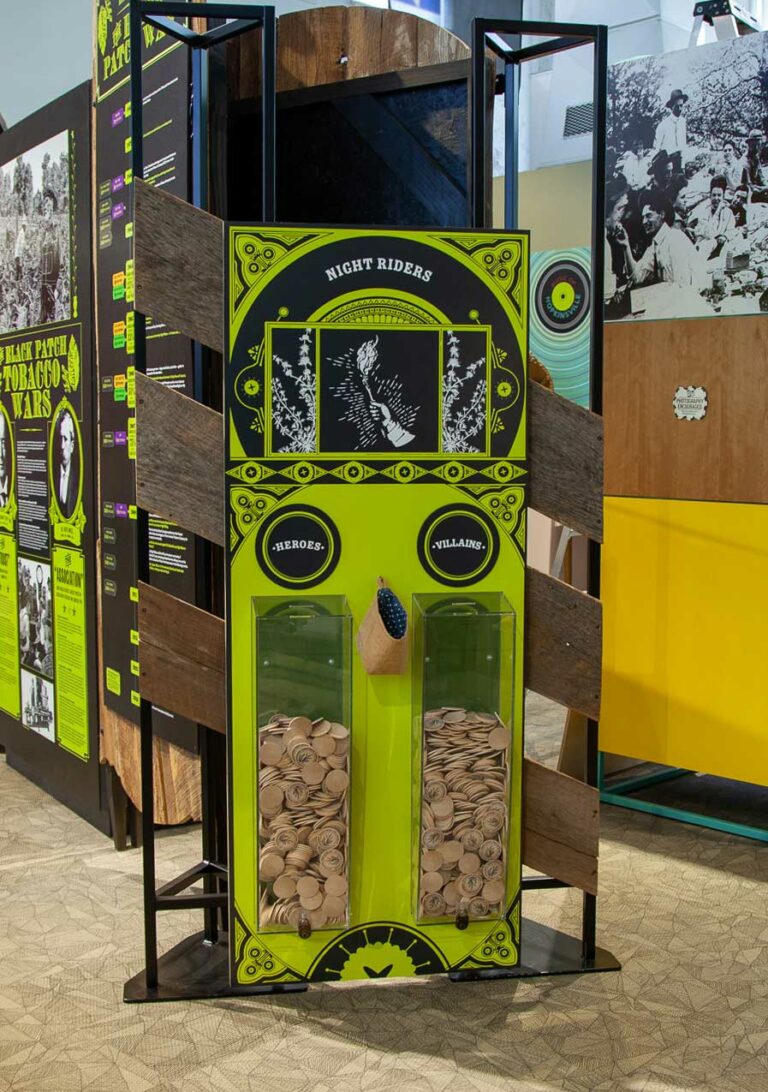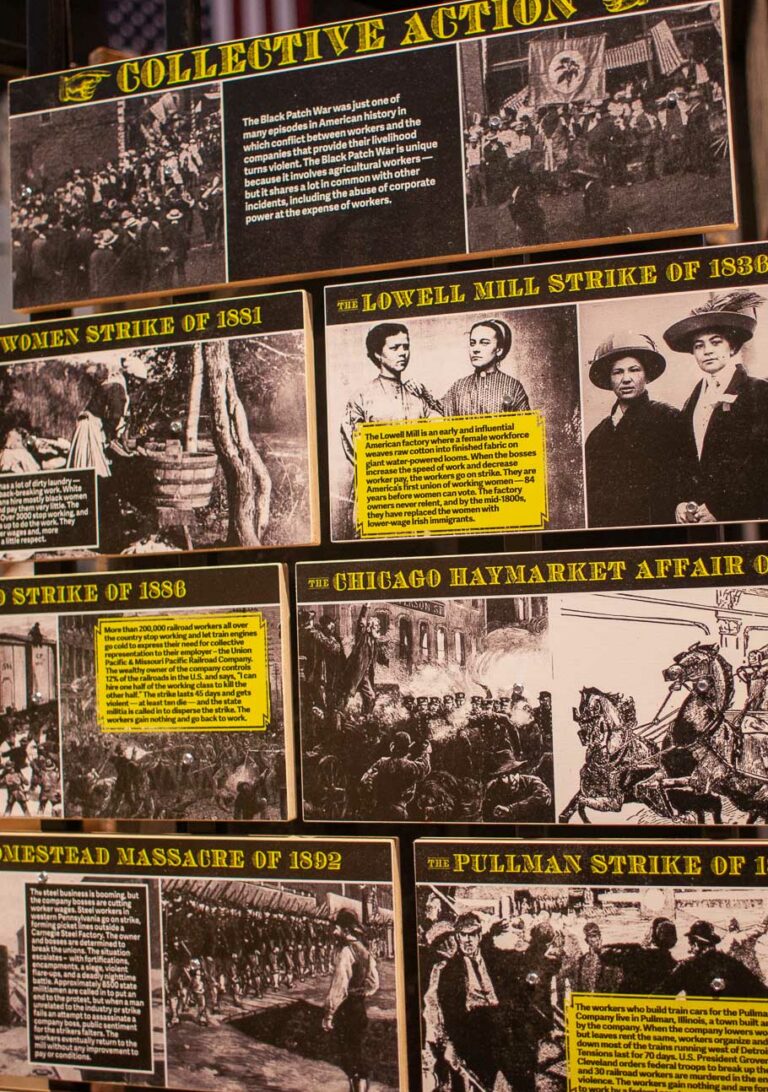Farming is a profession of individual responsibility and calculated risk, and the stakes were never as high as during the Black Patch War. The powerful tobacco monopoly that Black Patch farmers called the Trust would pay them less for their crop than what they had invested to grow it. But a farmer who joined the Association and held onto their crop until the Trust agreed to pay a fair price risked not making any money at all.
On an October evening in 1905, 32 Association members met in a schoolhouse in Robertson County, Tennessee — southeast of here — and agreed that more extreme means were needed to get more farmers to join the Association. They planned an operation to visit each uncooperative farmer and “offer him an opportunity to become a member.” Only complete loyalty to the Association would be tolerated.
The group put on masks to hide their true identities, and called themselves “Possum Hunters” because they did their work at night. This was the first of several Possum Hunter groups that sprang up across the Black Patch in the fall of 1905.


It did not take long before a strategy of recruitment — by any means necessary — came to include violence. These masked vigilantes were called Night Riders. Their ranks grew quickly.
From 1906 through 1909, the Night Riders rode throughout the Black Patch in groups of between six and 100. They wrote and delivered threats; destroyed plant beds by fire, hoe, saltwater, or by dispersing timothy, red drop, or clover seed to choke out tobacco seedlings; burned barns and other buildings; and destroyed farm machinery and mills. They would visit farmers at night, pull them and their families from their homes, and whip them. Quite a few interactions included gunshots and too often resulted in death.
Many people moved away from the Black Patch during this period. The experience of poverty and desperation was too common. Not since the Civil War had people been so divided — sometimes amongst family members. The Night Riders added anxiety and fear to an already volatile atmosphere.
However, at the same time, the Night Riders were an open secret in every Black Patch community. The Trust was a common enemy, and the Association was the only solution. Many people supported their local Night Riders. Law enforcement was sympathetic and slow to pursue the masked men. When the occasional Night Rider faced trial, judges and juries were reluctant to convict. Some Night Riders literally got away with murder.

Tobacco warehouses in Hopkinsville, Princeton, Russellville, Marion, and other towns were burned to the ground. These raids targeted big tobacco companies, but many homes and other buildings were destroyed by the fires. People were frequently wounded or killed in gunfire — random or otherwise.
The spectacular Night Rider raids attracted national attention. Western Kentucky and Tennessee appeared to be collapsing into chaos and anarchy. Many Black Patch residents supported the Association but were unsettled by the violence. Publicly, members of the Association swore off the Night Riders.
Troops from the Kentucky State Guard were called in to restore order and bring nighttime marauders to justice. Independents delivered their crops to market under arms, with wagons traveling together for mutual protection. At the same time, the Trust was beginning to pay a slightly higher price for Black Patch tobacco. The Tobacco Wars came to an end.